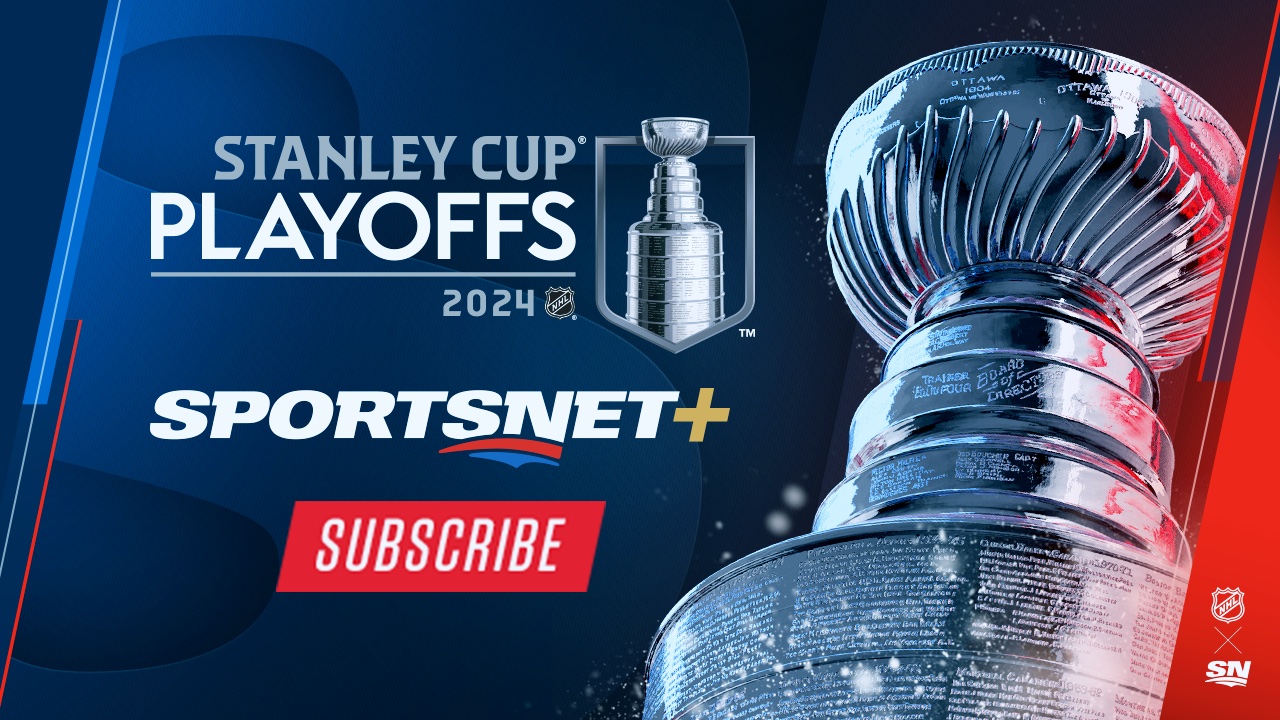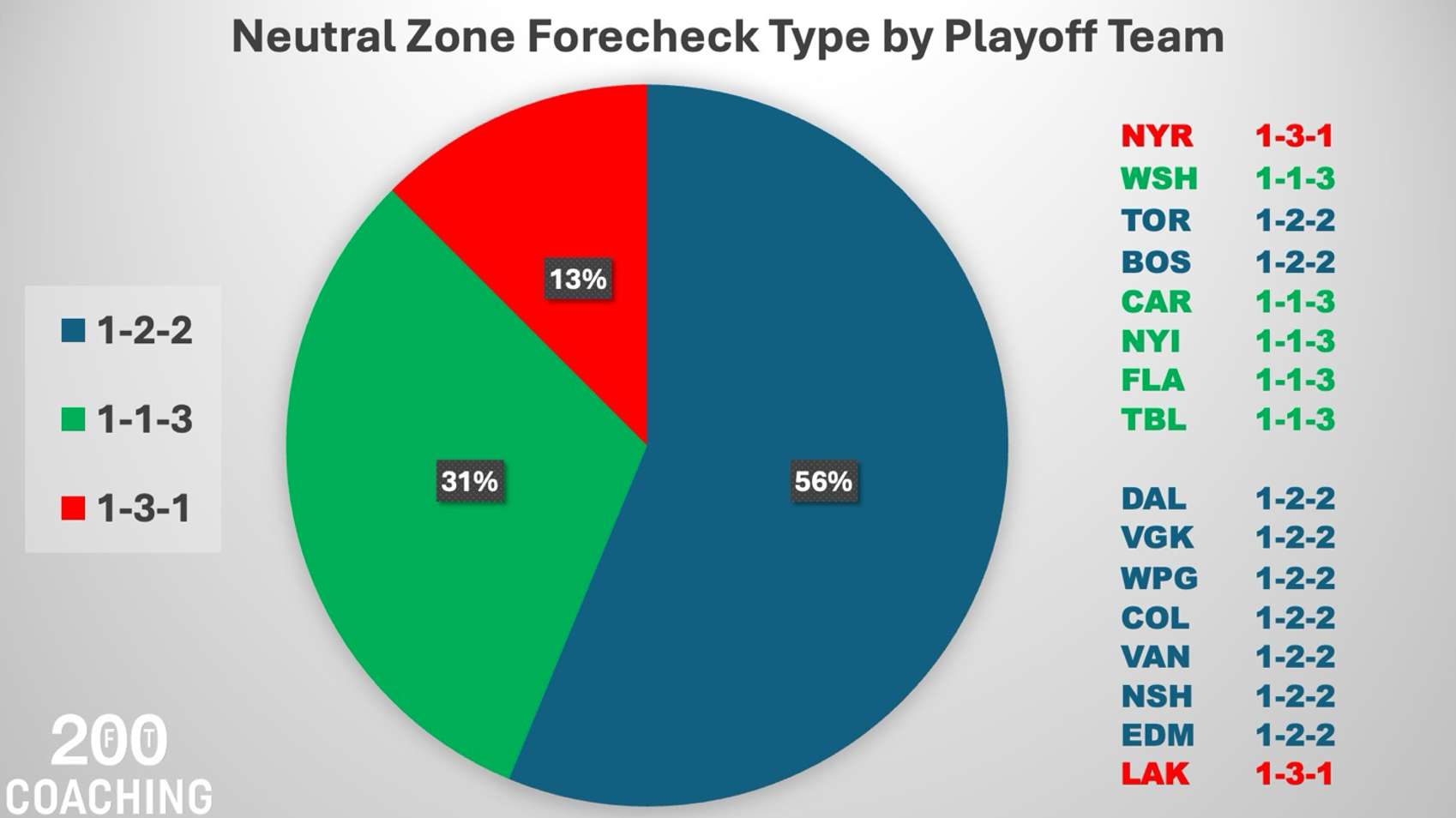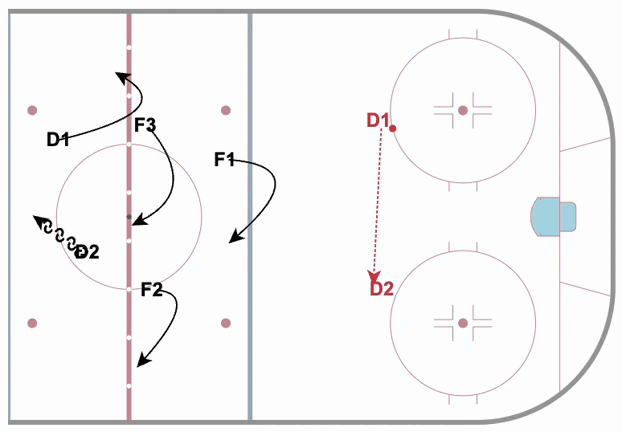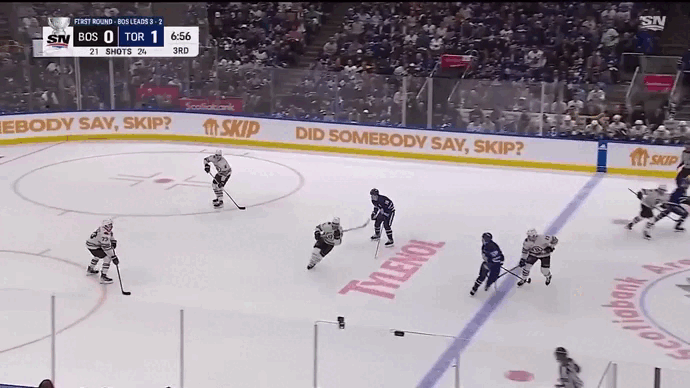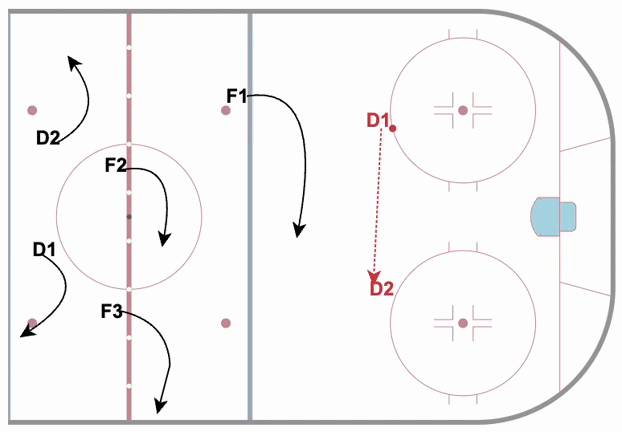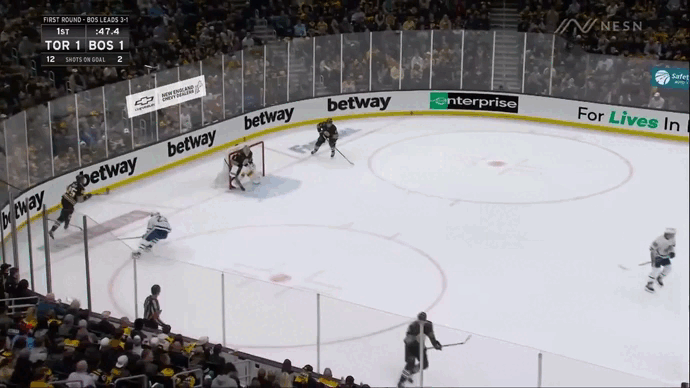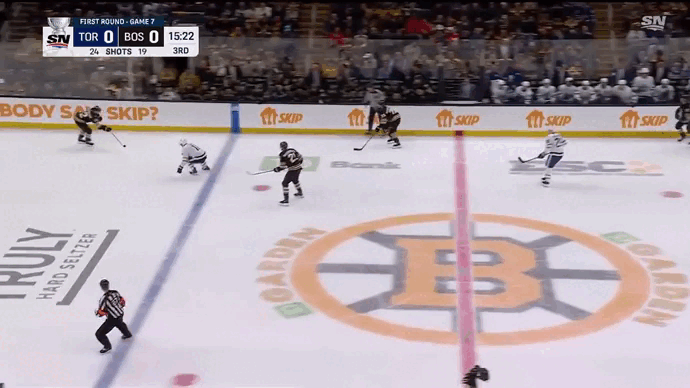Throughout any hockey season, different events and stories dominate a news cycle and sometimes coaching and team structure gets pulled into the spotlight.
For example, suddenly something as “boring” as neutral zone defence is dominating the season-ending headlines in Los Angeles, where the 1-3-1 system they utilized is being scrutinized, and in Toronto because of how the overtime-winning goal in Game 7’s loss unfolded.
So let’s dive into the coaching world and learn more about defensive systems in the neutral zone and the impact they have had on the NHL in the past week.
In light of the 150th running of the Kentucky Derby, let’s start with a horse racing analogy. While working with Jacques Lemaire (the father of the neutral zone trap) there was a common refrain, “getting through the neutral zone should be a muddy track.” Like a horse running on a rainy day, struggling to gain and maintain speed in the wet soil, the job of the defensive team is to eliminate all of the pace coming from the offensive team through structure and effort.
Think of a neutral zone system as the muddy track, and the jockey as the defensive player on top weighing the horse down.
TYPES OF NEUTRAL ZONE DEFENCE
Defensive play in the neutral zone can be broken into five main categories:
1. Pressure out of zone: When a puck is chipped out of the defensive zone into the neutral zone, how do you pressure out of your zone into the middle of the ice?
2. Backchecking/sorting from the rush: When the puck is leaving the opponent’s zone and you are defending the rush, how do you handle the opposing players?
3. Neutral zone forecheck: When the opponent regroups, often by passing the puck D-to-D, what structure do you get into to defend the neutral zone?
4. Controlled forecheck: When the opponent stops behind their own net and you are passively defending them, what structure do you use?
5. Line change forecheck: How do you defend the neutral zone while changing your players on the fly?
For the sake of this article we’ll focus on the defensive play in the news, the neutral zone forecheck.
WHAT SYSTEMS DO TEAMS PLAY?
Teams in the NHL use three basic “formations” in the neutral zone, which are defined by the number of players within each layer of the system. So throughout this article we’ll speak of the 1-2-2, the 1-3-1 and the 1-1-3.
THE 1-2-2
Why is it popular? Natural and easy to play while allowing passive interference.
This is the most “natural” of the neutral zone forechecks because you have F1 as a layer steering traffic, your two other forwards are above the red line, and your defenders are gapped up and protecting your blue line.
If you put five random players on the ice and don’t tell them where to go, chances are this is the structure they will default to. It just feels natural to defend this way and coaches take advantage of instincts so they use this system often.
Many teams will also use the 1-2-2 as an opportunity to interfere with players through the middle of the ice. Because you are skating forward, players can bump, cut off and work to passively interfere with the opposing forecheck.
THE 1-1-3
Why is it popular? Takes away rush chances against by forcing dump-ins
There has never been more skill in the NHL, and as a defender it’s never been more terrifying to have a Ferrari-like Connor McDavid attacking you on the rush. Coaches have responded to this by using the 1-1-3 “trap” to try and take away all the lanes at the defending blue line.
In this system F1 and F2 are there to force the puck to one side of the ice (generally the strong side where the defence is) and to eliminate cross-ice passes through the neutral zone. Especially popular in the Eastern Conference, teams use this strategy to keep numbers on the rush, while not worrying about the hard forechecks that you see in the West.
THE 1-3-1
Why is it popular? Takes away the opponent’s rush and forecheck chances
Easily the most maligned system in hockey, when well executed the 1-3-1 can be an absolute nightmare to create chances on the rush against. By shifting your three-man wall to the red line, teams take away the dump-in and eliminate both the opposition’s rush and forecheck chances. This allows teams to be more aggressive in transition and forces the opposition to make mistakes in the neutral zone.
SO WHO IS TO BLAME FOR TORONTO’S GAME 7 OT GOAL AGAINST?
After the fateful goal Saturday night there were many hot takes on the internet:
• Why didn’t Mitch Marner cut off David Pastrnak?
• Why isn’t William Nylander skating harder?
• Why isn’t Morgan Rielly defending Pastrnak better?
Who is actually to blame in this situation? Because from a coaching perspective, the answer is really none of the above.
To understand who is to blame, you first need to understand what the players were supposed to be doing in the first place.
The Leafs play a common 1-2-2 neutral zone forecheck and, in general throughout the Round 1 series, they were able to limit Boston’s ability to create chances both from the rush and on the forecheck.
Sometimes fans will refer to the Leafs’ neutral zone setup as a 1-3-1, and it can look like that at times. The reason for this is that Toronto plays a style of 1-2-2 with a detail that includes the weak side (non-puck side) defenceman (D2) gapping up or “absorbing” the rush on the weak side of the ice. Like you can see in the clip below, the defence is gapped up and ready to take away time and space if the puck changes sides of the ice.
The difference between a true 1-3-1 and a 1-2-2 “D Absorb” is that the defensive team only steps up or absorbs if a play is made to the weak side of the ice, where in a 1-3-1 the defenceman is always standing up to protect the red.
So what went wrong with Toronto?
While many are blaming what happened at the end of the play, the real issue on the game-winning goal started well before Pastrnak ever touched the puck. All tactical systems rely on multiple players executing their role to aid their teammates towards accomplishing a goal.
While it’s easy to blame Marner (F2) and Nylander (F3) as the players closest to the action, truthfully the biggest issue starts with Tyler Bertuzzi and John Tavares not establishing F1 within the forecheck.
The F1 on a neutral zone forecheck is the most important piece. You are the tip of the spear, the captain of the ship steering the opposition in the direction you want them to go. But in the clip below you can see that after Bertuzzi chases up ice (while also breaking one of Lemaire’s cardinal rules to never skate behind the opposing net without the puck) he changes and the Leafs don’t establish a new F1 to control the direction of the play.
This allows Hampus Lindholm to gain the red line and dump the puck to Pastrnak flying down the ice. In an ideal world, Tavares would re-attack the puck and allow Marner to get on the ice and establish the second layer of the forecheck. Bertuzzi and Tavares put Marner and Rielly in tough spots to have one of the top players in the league attacking on the forecheck with a ton of speed!
And this wasn’t the first time it happened in Game 7, either. Toronto got caught several times without an F1, allowing Boston to dump pucks and establish their strong forecheck game.
WHY IS THERE SO MUCH NOISE AROUND THE KINGS AND THE 1-3-1?
Do you ever notice as a fan, the only time you ever really hear about a neutral zone forecheck it tends to be around a team running a 1-3-1 structure? Whether it’s back to Guy Boucher with the Lightning, or Todd McLellan and the Kings, why is there always so much noise around this system? If, like we talked about earlier, a 1-2-2 can look almost exactly like a 1-3-1, why do you always hear so much about just one of them?
var adServerUrl = “”;
var $el = $( “#video_container-506527” );
var permalink = $el.closest(‘.snet-single-article’).data(‘permalink’);
/*
if ( “1” == true && ‘undefined’ !== typeof window.getIndexAds ) {
var so = {preroll:{1:{1:{siteID:191888},2:{siteID:191889}}}};
adServerUrl = window.getIndexAds( ‘http://pubads.g.doubleclick.net/gampad/ads?sz=640×360&cust_params=domain%3Dsportsnet.ca&iu=%2F7326%2Fen.sportsnet.web%2FVideo&ciu_szs=300×250&impl=s&gdfp_req=1&env=vp&output=vast&unviewed_position_start=1&ad_rule=1&vid=6352192303112&cmsid=384’, so, permalink);
} else {
adServerUrl = “http://pubads.g.doubleclick.net/gampad/ads?sz=640×360&cust_params=domain%3Dsportsnet.ca&iu=%2F7326%2Fen.sportsnet.web%2FVideo&ciu_szs=300×250&impl=s&gdfp_req=1&env=vp&output=vast&unviewed_position_start=1&ad_rule=1&vid=6352192303112&cmsid=384”;
}
*/
adServerUrl = “http://pubads.g.doubleclick.net/gampad/ads?sz=640×360&cust_params=domain%3Dsportsnet.ca&iu=%2F7326%2Fen.sportsnet.web%2FVideo&ciu_szs=300×250&impl=s&gdfp_req=1&env=vp&output=vast&unviewed_position_start=1&ad_rule=1&vid=6352192303112&cmsid=384”;
var adServerUrl_result = adServerUrl.includes(“cust_params”);
var queryString=”;
if(adServerUrl_result){
var gettheDUFI = localStorage.getItem(“theRED_loc”)
if(gettheDUFI){
queryString += “dufiid=” + gettheDUFI + ‘&’;
queryString += “ppid=” + gettheDUFI + ‘&’;
var ppid = “ppid=” + gettheDUFI + ‘&’;
}
var DUFI_IP = sessionStorage.getItem(“DUFI_IP”)
if(DUFI_IP){
queryString += “dufiip=” + DUFI_IP + ‘&’;
}
adServerUrl = adServerUrl.replace(/cust_params=/, ppid + ‘cust_params=” + encodeURIComponent(queryString) );
}
$el.after( unescape(“%3Cscript src=\”” + (document.location.protocol == “https:” ? “https://sb” : “http://b”) + “.scorecardresearch.com/beacon.js\” %3E%3C/script%3E”) );
$( document ).one( “ready’, function() {
$( “#video_container-506527” ).SNPlayer( {
bc_account_id: “1704050871”,
bc_player_id: “JCdte3tMv”,
//autoplay: true,
//is_has_autoplay_switch: false,
bc_videos: 6352192303112,
is_has_continuous_play: “false”,
adserverurl: adServerUrl,
section: “”,
thumbnail: “https://www.sportsnet.ca/wp-content/uploads/2024/05/6352192303112-1024×576.jpg”,
direct_url: “https://www.sportsnet.ca/nhl/video/what-are-next-steps-for-kings-and-gm-blake-after-another-early-exit/”
});
});
var adServerUrl = “”;
var $el = $( “#video_container-625369” );
var permalink = $el.closest(‘.snet-single-article’).data(‘permalink’);
/*
if ( “1” == true && ‘undefined’ !== typeof window.getIndexAds ) {
var so = {preroll:{1:{1:{siteID:191888},2:{siteID:191889}}}};
adServerUrl = window.getIndexAds( ‘http://pubads.g.doubleclick.net/gampad/ads?sz=640×360&cust_params=domain%3Dsportsnet.ca&iu=%2F7326%2Fen.sportsnet.web%2FVideo&ciu_szs=300×250&impl=s&gdfp_req=1&env=vp&output=vast&unviewed_position_start=1&ad_rule=1&vid=6352192303112&cmsid=384’, so, permalink);
} else {
adServerUrl = “http://pubads.g.doubleclick.net/gampad/ads?sz=640×360&cust_params=domain%3Dsportsnet.ca&iu=%2F7326%2Fen.sportsnet.web%2FVideo&ciu_szs=300×250&impl=s&gdfp_req=1&env=vp&output=vast&unviewed_position_start=1&ad_rule=1&vid=6352192303112&cmsid=384”;
}
*/
adServerUrl = “http://pubads.g.doubleclick.net/gampad/ads?sz=640×360&cust_params=domain%3Dsportsnet.ca&iu=%2F7326%2Fen.sportsnet.web%2FVideo&ciu_szs=300×250&impl=s&gdfp_req=1&env=vp&output=vast&unviewed_position_start=1&ad_rule=1&vid=6352192303112&cmsid=384”;
var adServerUrl_result = adServerUrl.includes(“cust_params”);
var queryString=”;
if(adServerUrl_result){
var gettheDUFI = localStorage.getItem(“theRED_loc”)
if(gettheDUFI){
queryString += “dufiid=” + gettheDUFI + ‘&’;
queryString += “ppid=” + gettheDUFI + ‘&’;
var ppid = “ppid=” + gettheDUFI + ‘&’;
}
var DUFI_IP = sessionStorage.getItem(“DUFI_IP”)
if(DUFI_IP){
queryString += “dufiip=” + DUFI_IP + ‘&’;
}
adServerUrl = adServerUrl.replace(/cust_params=/, ppid + ‘cust_params=” + encodeURIComponent(queryString) );
}
$el.after( unescape(“%3Cscript src=\”” + (document.location.protocol == “https:” ? “https://sb” : “http://b”) + “.scorecardresearch.com/beacon.js\” %3E%3C/script%3E”) );
$( document ).one( “ready’, function() {
$( “#video_container-625369” ).SNPlayer( {
bc_account_id: “1704050871”,
bc_player_id: “JCdte3tMv”,
//autoplay: false,
//is_has_autoplay_switch: false,
bc_videos: 6352192303112,
is_has_continuous_play: “false”,
adserverurl: adServerUrl,
section: “”,
thumbnail: “https://www.sportsnet.ca/wp-content/uploads/2024/05/6352192303112-1024×576.jpg”,
direct_url: “https://www.sportsnet.ca/nhl/video/what-are-next-steps-for-kings-and-gm-blake-after-another-early-exit/”
});
});
It all comes down to two key factors.
1. Aggressiveness. Right or wrong, a 1-3-1 is considered a passive neutral zone forecheck, which means once you lose possession in the offensive zone your job is to retreat and prepare to defend the rush. In general, this leads to a less aggressive system where you don’t re-attack the puck as much once possession is lost. Most players are aggressive by nature. They got to the NHL by chasing a dream (and chasing the puck) and generally don’t like to sit back and wait for the play and opponents to come to them.
2. Forwards vs. Backwards. Part of being a passive system means your forwards spend much more time skating backwards versus skating forwards. Instead of gapping up and angling a player individually, the 1-3-1 system focuses on the structure to do the work and the players to maintain a position. So, now players are backing up and getting into their set positions instead of maintaining motion and playing more aggressive. Today’s players are always moving and skating forward and don’t have much of an appetite to sit back on their heels.
John Wooden said “It’s the little details that are vital. Little things make big things happen” and that’s true in hockey. It’s the little details within the game that make a difference in the Stanley Cup Playoffs and are amplified in a short-term competition.
An NHL coach’s job is to understand the details, communicate them to your players and ensure they buy in to execute the plan. As we’ve seen in the past week, if any of those steps are missing it can have a massive impact on a franchise and possibly lead to the end of an era for one of the Original Six teams.


